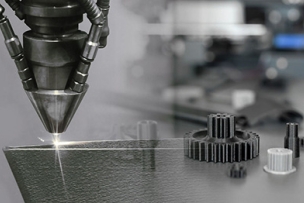Partnering with experts at UC Davis, the ATC co-developed a special silicon chip to channel light fed from tiny lenses. ATC’s new system could reduce the size, weight, and power needed for optics by 10 to 100 times while offering similar resolution. As an array, SPIDER is cheaper, faster to produce, and lighter than the optics in traditional telescopes, making the technology easier to send into space.
The SPIDER imaging technology can be fitted to any number of flat shapes, however the best arrangement for a particular purpose will depend on the context of the application, the object or vehicle it’s mounted on, and tradeoffs between spaceflight efficiency and light collection. To explore and test these concepts, ATC engineers designed different SPIDER arrays in Solidworks, then prototyped them to further refine and iterate on their models.
ACCELERATING SCIENTIFIC DISCOVERY
MakerBot’s professional solutions have allowed Guy Chriqui, Senior Research Engineer at the ATC, and Sutyen Zalawadia, Mechatronics Engineer, to quickly accelerate the iterative design process and cost-effectively prototype for SPIDER on their own. Outsourcing any of this work just wasn’t an option, as Chriqui explains: “We would get quotes in the thousands of dollars with an eight-week lead time for just one version of a model — I can’t imagine what 14 versions would cost.”
Chriqui and his team also have a cutting-edge machine shop in house, but the MakerBot 3D printers nearby allow the SPIDER team to iterate new versions in only hours. Plus, since the ATC has many sensitive projects, outsourcing work to contractors would not just slow down projects and increase costs, it would also require approvals and paperwork that could be avoided by turning to a MakerBot a few feet away.
By accelerating the design process, MakerBot Desktop 3D printers have bolstered scientific experiments, enabling more tests, more insights, and more potential breakthroughs in a shorter period of time. Moving more quickly from ideation to iteration and refinement gives engineers a big competitive advantage, helping deliver better solutions faster to clients.
No stranger to MakerBot, the ATC used the Replicator 2 and 2X to prototype parts and tooling for the James Webb Space Telescope back in 2013. They have since updated with the Replicator (5th Gen), Mini, Z18, and now the Replicator+ and Replicator Mini+ — or “the full MakerBot lineup,” Chriqui notes jokingly. “They’re basically running non-stop, all day long, and have enabled a lot of really quick iterations for parts that may have otherwise slowed completion of the final product.”
Beyond prototyping SPIDER arrays, the team’s Replicator Mini is also an effective field 3D printer for when the engineers travel to different testing facilities. “When we test smaller rockets, the nose cones blow off and are mostly unrecoverable, so we bring the Mini to the launch site and print different nose cones on the spot,” Zalawadia elaborates.
MakerBot’s filament has also proved beneficial. With new materials like MakerBot Tough PLA, ATC’s engineers can make entirely new products and applications possible, such as high-quality snapping joints Chriqui calls flextures. Whereas these flexible hinges and joints would normally fail when printed as PLA, they function well with Tough PLA, allowing the team to print prototypes that are closer to the final product. In testing the SPIDER technology, the team also found that MakerBot True Black PLA at 100-percent infill is perfect for absorbing light. Good light absorption is important so there is no light leakage that can affect optical tests. They also use neon MakerBot PLA filament to highlight specific parts of a print.
When Chriqui and Zalawadia had the opportunity to test the MakerBot Print platform, they appreciated its added efficiency, especially for assisting coworkers with ad hoc 3D printing requests. The Auto Arrange and multi-printer control features were used for setting up different projects on multiple build plates and sending them to different printers. With MakerBot Print’s Native CAD feature, ATC engineers can also work in their preferred program and file format, without the hassle of creating STLs or converting files, and then share files to easily collaborate.



Talk to Us!
Leave a reply
Your email address will not be published. Required fields are marked *